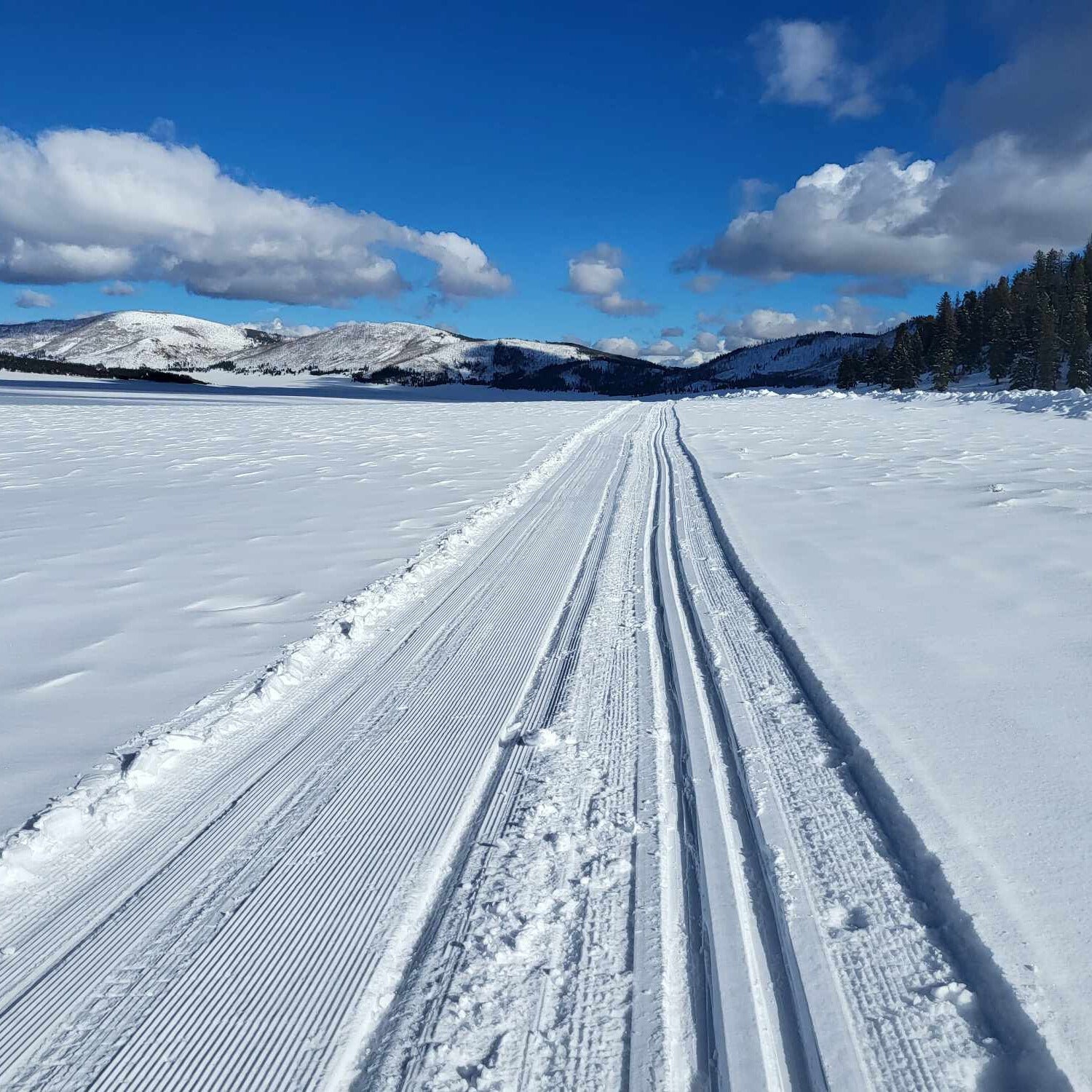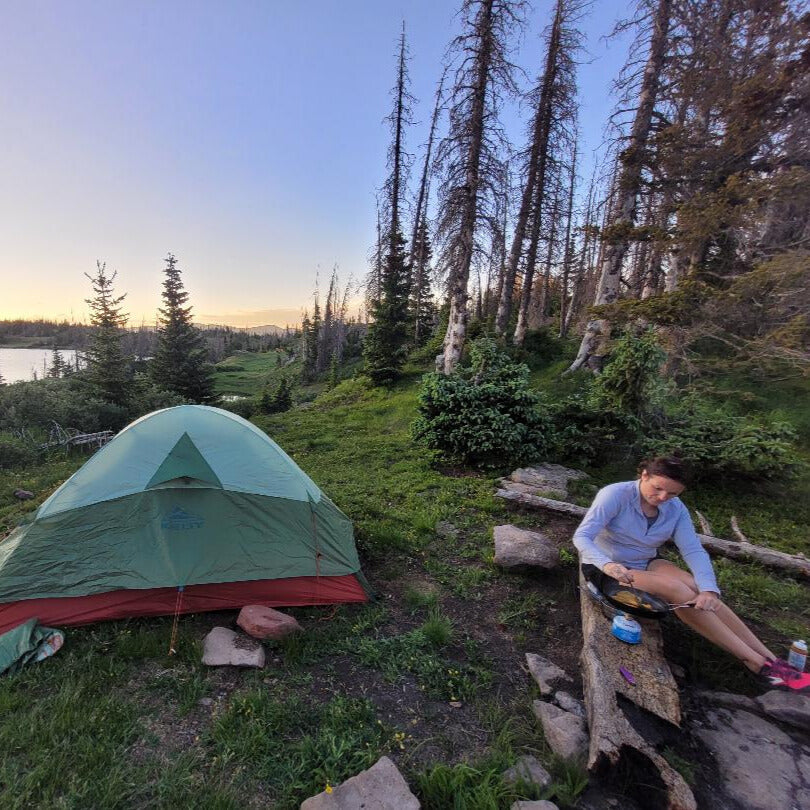Your Cart is Empty
accepting gear drop offs Mon-Sat 10am-5pm. No Consignment acceptance on Sundays.
accepting gear drop offs Mon-Sat 10am-5pm. No Consignment acceptance on Sundays.

Backcountry skiing is your ticket untouched, remote slopes. It’s exhilarating and challenging, but it does take specialized equipment to get up the mountain. This equipment not only lets you climb and descend, but keeps you safe and able to handle unpredictable conditions.
A high-quality backcountry skiing setup is not cheap, but the good news is you can buy almost everything used, and once you’ve got your setup, skiing itself is basically free.Durango Outdoor Exchange has top-quality used gear that will have you climbing the mountain in style. This guide will show you what you need to get started.
The main gear you need for backcountry skiing are skis, boots, poles, a backpack with avalanche and emergency essentials, and proper clothing.
Backcountry skis differ from resort skis in a few important ways. These skis need to perform well both on the ascent and descent, so weight is a crucial consideration.
Touring skis: Lightweight skis make climbing easier while providing stability for descents. Many skiers opt for a slightly wider ski for better float in deep powder–think 100mm or more at the ski waist.
Alpine touring (AT) bindings: These allow your heel to lift during ascents and lock down for the descent. The two types are frame bindings (think downhill bindings on a pivot–more supportive but much heavier) and tech bindings (lighter but may take practice to master).
Climbing skins: Essential for uphill travel. Made of nylon, mohair, or a blend, skins attach to the base of your skis using an adhesive and provide grip to prevent backsliding during climbs.
Looking for different options? You can also backcountry ski with a telemark set up and with a “back country” cross-country ski kit. Newer hybrid tech bindings add better stability and release functions to traditional stripped-down tech setups. Each has benefits and drawbacks–make sure to ask the pros at Durango Outdoor Exchange for more information on each.
Backcountry ski boots differ from traditional alpine ski boots in their design, allowing for both flexibility and support while cutting weight.
Touring boots: Lighter than resort boots and have a walk mode that provides more ankle movement for ascents. They also feature compatibility with touring bindings, which is critical.
Fit: Poorly fitting boots cause discomfort and blisters.
Avalanches are a significant risk when skiing in the backcountry (and doubly so in Southwest Colorado), so having the right safety gear—and knowing how to use it—is non-negotiable.
Avalanche transceiver: Small device that emits a signal to help rescuers locate you. Every skier in your group should carry one and know how to use it.
Avalanche probe: Collapsible pole used to pinpoint the exact location of a buried skier.
Shovel: Compact and lightweight, avalanche shovels are designed for digging through snow and are critical for rescuing a buried skier. Look for a durable model with an extendable handle for better leverage. Metal > plastic.
Airbag backpack: Though not essential, these backpacks can increase your chances of surviving an avalanche by helping you stay on top of the snow. There are many types and the technology is constantly changing, so it pays to comparison shop before committing.
Backcountry ski poles are different from standard poles in that they are often adjustable in length, which is particularly useful when switching between ascending and descending. Some skiers opt for poles with extended grips to provide versatility when climbing steep terrain.
Backcountry skiing involves unpredictable terrain and conditions, so a helmet is essential for protecting your head from falls, rocks, or other hazards. Look for a lightweight, ventilated helmet designed for both skiing and mountaineering.
Goggles are equally important, as they protect your eyes from wind, snow, and sun glare. Backcountry conditions can change quickly, so consider goggles with interchangeable lenses for different light conditions.
Dressing right for backcountry skiing is all about layering. You’ll need to manage your body temperature during strenuous ascents and cold descents.
Base layer: Moisture-wicking base layer. Merino wool or synthetic materials are best for this.
Mid layer: Insulating layers, such as fleece or down jackets, provide warmth during the coldest parts of the day or when you’re stopped. Look for quick-drying, lightweight, and packable.
Shell jacket and pants: A waterproof, windproof shell is essential to protect against the elements. Look for breathable fabrics. Don’t be afraid to throw yours in the washing machine every once in a while, too.
Gloves: Your hands will need protection from both cold and moisture. Many backcountry skiers opt for a glove liner and an outer shell for maximum warmth and flexibility. Better to pack two or more in case one is lost or gets too wet.
Emergency backup: Seasoned backcountry skiers, especially those venturing further into the backcountry, will pack extra jackets, socks, hats, and gloves.
A dedicated backcountry skiing backpack is one that is designed to carry avalanche gear, extra layers, water, snacks, and other essentials. These backpacks typically have straps to secure your skis during ascents when you might need to carry them. Look for a model with easy access to your avalanche gear and a comfortable fit for long treks. A separate storage area for wet gear such as skins and your shovel will come in handy. Don’t want a dedicated BC backpack? Many larger daypacks can work nearly as well–ask Durango Outdoor Exchange staff for some recommendations.
Phones are an essential backcountry tool.
GPS: Download maps before you head out.
Current conditions:Get site-specific weather, avalanche, and road conditions on your way up the pass or even while skinning.
Emergency calls: The San Juans in particular often have good cell coverage in unexpected places–a phone call can alert friends or first responders if something goes horribly awry.
It’s easy to underestimate how much energy backcountry skiing requires. Staying hydrated and well-fed is crucial to maintaining your strength and focus.
Hydration bladder or water bottles: Tip: Store them upside down in very cold weather to prevent the mouth from freezing.
Snacks: For fun and sustenance.
Finally, always carry a small emergency kit that includes items like a first aid kit, fire-starting tools, a multi-tool, and even spare skin glue. As you travel in the mountains and again experience, you’ll learn what other items are needed for you specifically.
Yes, this list is long, but luckily Durango Outdoor Exchange has everything you need to get going. Stop by the shop and talk to our skiing experts, then pick up used gear at a fraction of the cost of new.

Thanksgiving is almost here–and skiing this early is always a gamble. Here are some non-skiing warm(er) weather destination ideas for the long break.

Just a couple hours from Durango, Valles Caldera is a great cross-country skiing destination, with surprisingly good snow and very few visitors.
Valles Caldera National Preserve is a popular hiking destination in the summer and a surprisingly great skiing destination in the winter.

When spending one night (or many) in the backcountry, a warm dinner at night and hot beverage in the morning can make the difference. That invariably involves using a stove of some sort–but which one?
Stove technology has been around for decades, but new tech is making them lighter, more efficient, and more dependable than ever before. Here’s a rundown of the different kinds of backpacking stoves: